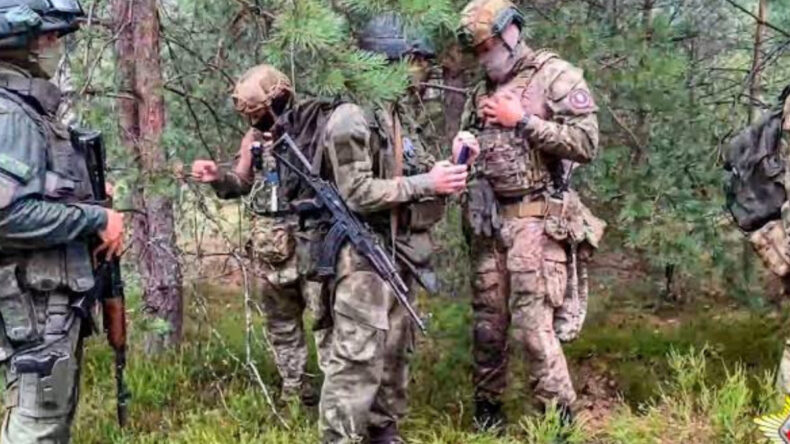
In an escalating security crisis in Europe, tensions between Poland and Belarus have surged after Belarusian helicopters allegedly violated Polish airspace during training exercises. The incident, which took place near the Suwalki gap or corridor, has prompted Poland to deploy more troops and combat helicopters at the border, further exacerbating the situation on NATO’s doorstep.
Warsaw accused Minsk of violating its airspace on Tuesday, a charge that the Belarusian defence ministry promptly denied, dismissing it as “far-fetched.” However, Poland remains steadfast in its assertion that the violation occurred at a “very low altitude,” making it difficult to detect with radar systems. The disputed region of the Suwalki corridor is strategically significant, acting as a vital link between the Russian enclave of Kaliningrad and Belarus, and the rest of the European Union.
Adding to the complexity of the situation, troops from the Russian mercenary group Wagner have been seen moving towards the Suwalki gap, seemingly attempting to increase pressure on NATO and EU members. Reports suggest that Belarusian leader Alexander Lukashenko brokered a deal to cap Wagner’s failed rebellion against Moscow, leading to the influx of thousands of mercenary fighters into Belarus.
Poland’s Prime Minister Mateusz Morawiecki has voiced concerns about Wagner mercenaries heading towards the Suwalki corridor via Grodno, a city in western Belarus. Experts have highlighted that such a move could create a direct link between Russia and Kaliningrad, allowing Russia to potentially isolate the Baltic States from their NATO allies in central and western Europe. This scenario raises serious security concerns for countries like Lithuania, Latvia, and Estonia, triggering a potential military reaction from other NATO members.
Barbara Yoxon, a lecturer in international politics at Lancaster University, emphasizes that Poland sees Belarus as complicit in the current European security crisis. She states that deploying troops to the Suwalki gap would serve as a crucial target for Putin’s regime, potentially signalling Russia’s readiness to escalate its confrontation with NATO and risking nuclear escalation on both sides.
The situation has also led to a diplomatic spat between Poland and Ukraine, two key players in the region. Poland recently accused Kyiv of being ungrateful for its support in exporting Ukrainian grain after Russia withdrew from a deal allowing safe passage for Ukrainian grain from southern ports. In response, five EU countries, including Poland, lifted sanctions on the import of Ukrainian grain to protect their agricultural industries. However, Ukraine called on the Polish ambassador to express that statements about Ukrainian ingratitude are unacceptable, as the friendship between the two nations runs far deeper than political pragmatism.
The mounting tensions in the region have triggered concerns within NATO and the EU, as they closely monitor the situation and seek to address the security challenges posed by Wagner troops’ movements and the strained relations between neighboring countries. European leaders are aware that any escalation in the Suwalki corridor or near NATO’s border with Belarus could lead to wider conflict and have far-reaching consequences for the stability and peace of the region.
As the situation continues to unfold, all eyes remain on the region, with NATO and EU members collectively considering their next steps to prevent any further escalation and ensure the security and stability of Europe. The delicate balance between diplomacy and defence will be crucial in navigating the complexities of the situation and averting any potential full-scale war that could have catastrophic implications for the continent and beyond.













